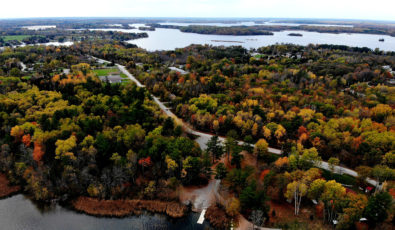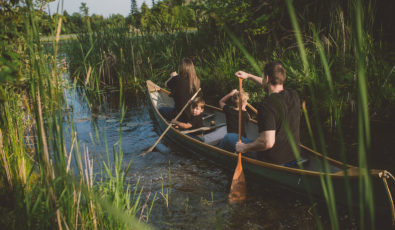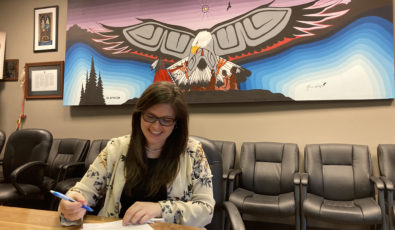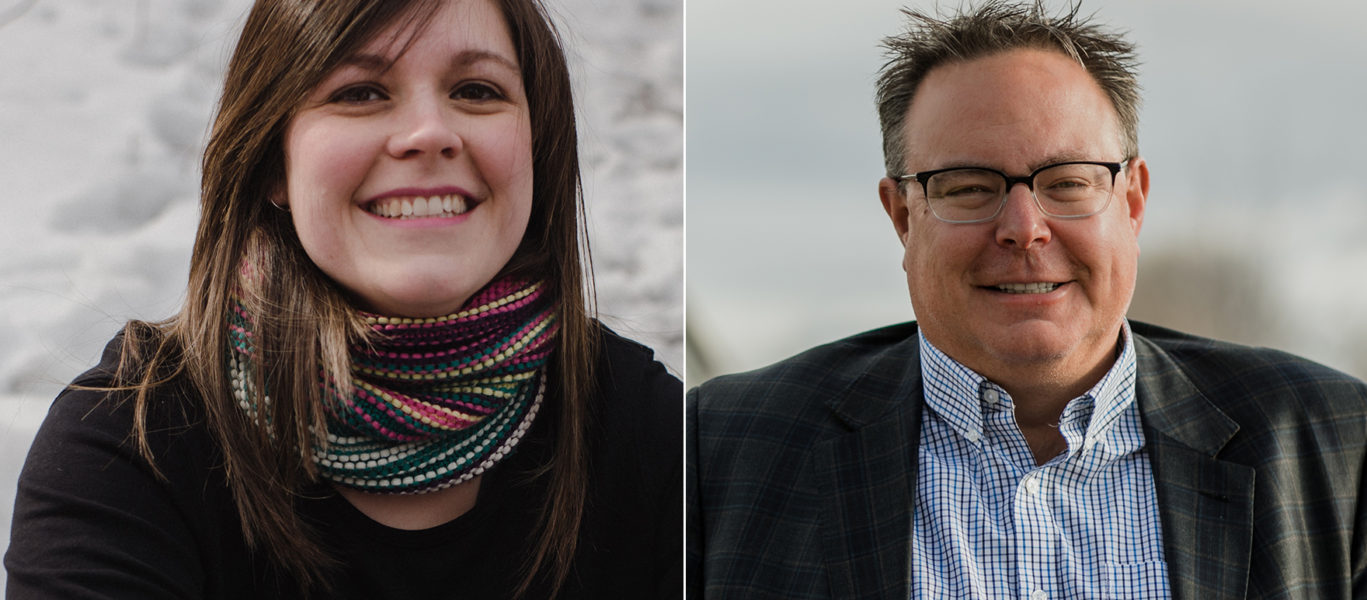For Chief Emily Whetung of Curve Lake First Nation, nuclear power wasn’t something she thought too highly of—until recently. When she was first elected Chief in 2019, she viewed nuclear with suspicion. “Coming in I didn't know much about nuclear power but I had this idea that it was not good,” Chief Whetung told Andrea Bain on The Climate Challengers podcast.
But the closer she looked, the more she liked what she saw. “Having had an opportunity to engage with the energy industry in terms of climate change, I feel like I've learned that nuclear energy is way better,” the Chief said, referring to the fact that nuclear power has as small of a carbon footprint as wind and solar. “And finding out that nuclear energy is one of the cleanest types of energies kind of rocked my world. It shifted my whole perspective,” the Chief said.

Curve Lake First Nation is located thirty minutes north of Peterborough, Ontario. The community of 2,000 is proud to offer its residents a host of social and community services, including childcare and elementary education for its youngest residents, but like other First Nations still struggles with issues like clean drinking water and being meaningfully consulted on projects that impact its traditional territories.
Chief Whetung sees that beginning to shift, as companies like Ontario Power Generation (OPG) get serious about fulfilling their role in reconciliation with Indigenous peoples. And for Chief Whetung, that begins with relationship building.
“Building that relationship between industry and government and First Nations, Indigenous people, is going to be critical moving forward,” Chief Whetung said, pointing out that these things take time and effort. “You don't just sit down and have a detailed, intimate conversation with someone you just met. Typically, you have to build up to that relationship.”
Building that trust and creating real partnerships where Indigenous people are given a seat at the table is critical because Indigenous people not only have treaty rights that must be honoured, they also bring unique perspectives to conversations around energy, climate and land use.
“I think there is a couple of things that the energy industry needs to understand about Indigenous people,” Chief Whetung said. “First and foremost, is that we're constantly thinking about our next seven generations. What does this thing that we're about to do have as an impact on those future generations? And our goal is to leave mother earth in as good a condition or better than we found it. And nuclear energy has long-term impacts into those generations, so addressing those issues is going to be really critical.”

Chief Whetung, who was a practicing lawyer before becoming chief, told Andrea that becoming a mother really helped crystalize her views. “Thinking about the two little boys that I have… I want a really great future for them. Knowing that, we've got to find an answer to this climate change emergency that's happening. [It] really shifted my perspective to consider nuclear in new ways and learn more about it.”
OPG’s generating assets and other facilities are on the treaty lands and traditional territories of Indigenous peoples throughout Ontario. Guided by its existing relationships with Indigenous communities, OPG is undertaking a multi-year initiative to further improve its relations with Indigenous peoples by ensuring they are meaningful partners who have input into—and benefit from—OPG’s activities.
On its last four renewable power projects, OPG entered into equity partnerships with local Indigenous communities that created immediate and lasting benefits. The 28-megawatt Peter Sutherland Sr. Generating Station, which entered service in 2017, is one of these projects. OPG’s partner in the development is Coral Rapids Power, a wholly owned company of the Taykwa Tagamou Nation (TTN). “We had 49 TTN members working on the project at one point in various capacities, which was significant for our First Nation partner,” said Paul Burroughs, Project Director at OPG. “They were part of the project team working to help make this a success.” With one third ownership of the project, the Peter Sutherland Sr. Generating Station will benefit the Takywa Tagamou Nation for another 90 years, as the community enjoys a share of the profits from their investment.

In 2021, OPG announced it was going further, with the formal launch of its Reconciliation Action Plan (RAP). The RAP is a ten-year road map that the leaders and employees of OPG will follow to advance reconciliation with Indigenous peoples. It brings every aspect of indigenous relations under one umbrella and is organized around five pillars: leadership, relationships, people, economic empowerment and environmental stewardship.
With a dedicated team of senior leaders within the company overseeing progress, the RAP aims to grow the economic impact of OPG’s operations for Indigenous communities and businesses to $1 billion within 10 years. Through the RAP, the company has also committed to increase the representation of Indigenous employees across all levels and businesses of OPG. To achieve this, OPG will continue to invest in its Indigenous Opportunities Network (ION), which is growing the Indigenous skilled talent pool within OPG and the broader energy industry.
Formally launched in 2018 as a partnership with Kagita Mikam, an Indigenous agency that provides training and employment services within the nuclear and energy industries, ION has successfully placed 52 Indigenous workers in various roles at OPG, exceeding its targets every year. In 2020, ION was expanded to include OPG’s entire operations. It will be a critical way in which OPG continues on its journey towards reconciliation.

“This is not just a plan. It is not just words. It is real action to create meaningful change and it will help our country in its work to achieve reconciliation with Indigenous peoples,” said Christine John, a Senior Adviser in Indigenous Relations at OPG. “For me, there are many ways towards reconciliation, but reaching net-zero in partnership with Indigenous communities is one that really gets me excited. Achieving something so big and so important together as partners will set us on the right path for future generations.”
Chief Whetung takes a similar view, but added that we also must keep in mind the bigger picture, telling Andrea that “Canada's path to reconciliation is broad and huge. And absolutely energy has to be a part of that path, but it can't be the only part.”
For Chief Whetung, being a Climate Challenger “means finding solutions to protect the earth for those seven generations. And ultimately, I think everything for me comes back to that… I want them to have a healthy life. I want them to have a meaningful and fulfilled life. And in order to do that, we have to find solutions to some of the issues that are facing us right now.”
Chief Whetung and Sean Willy: Indigenous perspectives on cleaner energy
Chief Whetung and Sean Willy: Indigenous perspectives on cleaner energy

The information, statements, comments, views and opinions expressed during this podcast are solely those of the program participants and do not necessarily represent those of Ontario Power Generation Inc. or its affiliates.


